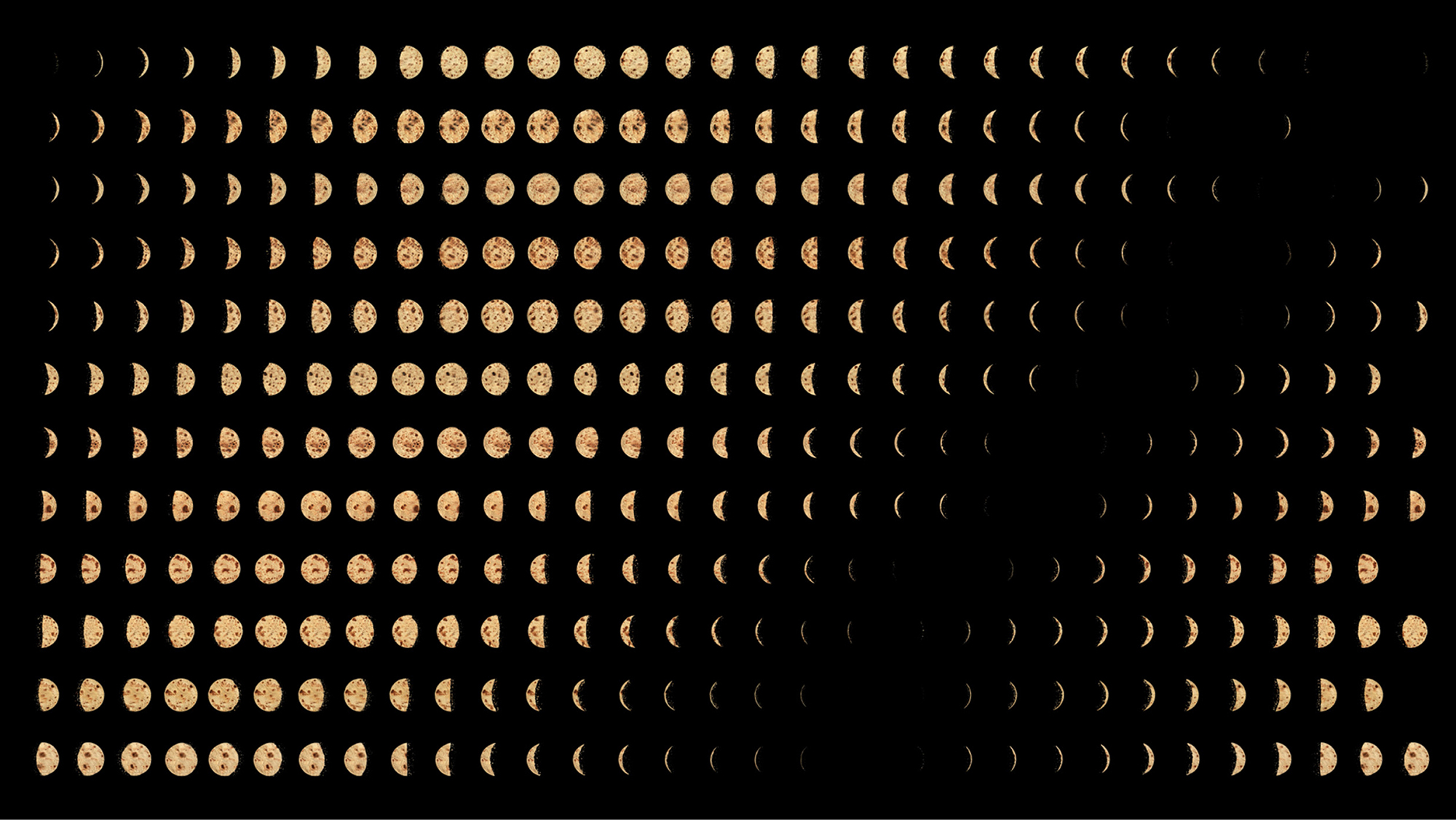Shows
Jitish Kallat's “Decimal Point”


What do food, animals and natural phenomenon have in common? Jitish Kallat’s solo exhibition, “Decimal Point,” at New York’s Sperone Westwater showed that these elements are irrevocably tied to the body and perpetual cycles of change, poetically blurring the boundary between the elusive cosmos and the mundane everyday. Dispersed throughout three floors of the gallery space, the exhibition showcases recent iterations of the artist’s process-based practice that give agency to the erratic workings of chance, while developing a systematic method for capturing intimate moments between nature and the self.
Kallat’s mastery at staging theatrical illusions, followed by revelations and the provocation of quiet chuckles, is illustrated by Sightings (2017–18). Composed of four vertical panels of lenticular prints, the work commands the viewer with its towering presence and luminous color washes, evoking iconic supernova explosions, or thermal displays of infrared energy. An adjacent sculpture titled Covariance (Sacred Geometry) (2017–18) is part of the same interstellar universe: with an irregular surface punctured by different species of animal eyes, it stands in for both fossilized relics and sentient objects. When the photographs are revealed to be close-up shots of fruit skins, commonly-agreed-upon scales begin to collide and dissipate, as familiar marks that characterize a melon or a banana are connected to stretches in a cosmological expanse.

If these works posit the porousness of being, stripping away the common reference points that we use to differentiate the minute from the infinite, the sentient from the inert, human from other, The Eternal Gradient (2015) furthers the notion that opticality is by nature humorous, and culturally specific. The single-channel video was housed in an elevator, the gallery’s most unique exhibition space. What appears to be a lunar eclipse chart is actually documentation of 365 roti breads being consumed throughout the course of one year. Each made up of tiny pixelated squares, these crescents display changes barely perceptible to the human eye, aligning ordinary food consumption with cyclical celestial movement.

While technological leaps in deep-space exploration and quantum physics are increasingly capable of visualizing the impossibly miniscule and the unimaginably expansive, Kallat prefers to search for poetic crossovers in everyday rituals and elemental happenings. For Wind Study (Hilbert Curve) (2017), he transcribes the “silent conversation between wind and fire,” according to the exhibition’s press release. Having laid down varying sizes of the Hilbert Curves, a fractal space-filling curve used for mathematical mappings, the artist seals each line with inflammable adhesive and sets it aflame. The marks left by the fumes are determined by the direction and magnitude of the wind when the surface is set ablaze, rendering visible the spectral, irrational dances of the wind.
Continuing Wind Study’s themes, drawings from Rain Study (The Hour of the Day of the Month of the Season) (2017) are partly authored by rainwater. The artist caught splashes of monsoon rain on paper, and sprayed it with charcoal pigment, leaving behind constellations of droplets that recall star clusters or undulating grooves of a planetary surface. Most remarkably, by recording the time the process took as “breath cycles,” or “BC,” Kallat ties the formation of these ambiguous forms with the body’s innate functions. Just like the way Sightings questions anthropocentric references, the very notion of biologically induced, pulsating durations forms a stark contrast with the exactitude of calendrical time. For Kallat, such elasticity and unruliness extends into the realm of text: only portions of the works’ written notations are legible, rendering them irreducible to one essential meaning.
In French philospher Henri Bergson’s 1907 book, Creative Evolution, one finds a similar preoccupation with duration, scale and matter: “The universe endures. The more we study the nature of time, the more we shall comprehend that duration means invention, the creation of new forms, the continual elaboration of the absolutely new.” The Infinite Episode 2 (2016), an installation consisting of ten dormant, plaster animals, illustrates that duration is precisely the pure flow of time, applying not only to human beings, but all matter in the universe. Among the species lying in eternal sleep, the most outstanding is the turtle, with its claws stretched out, eyes closed, and mouth upturned—the specificity of expression reveals the contradiction between capturing a moment frozen in time, and the perpetuity of time. By encouraging the viewer to experience the animal other, non-sentient objects, and the body’s interactions with fundamental natural elements, Kallat collapses the cosmic and the everyday as bound up by free flows of energy and matter.

Jitish Kallat's “Decimal Point” is on view at Sperone Westwater, New York, until June 16, 2018.







